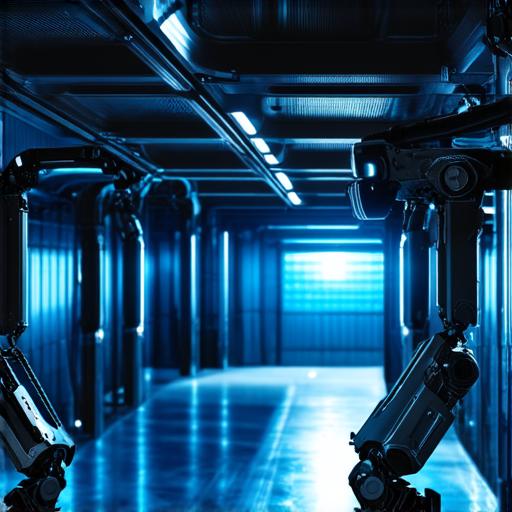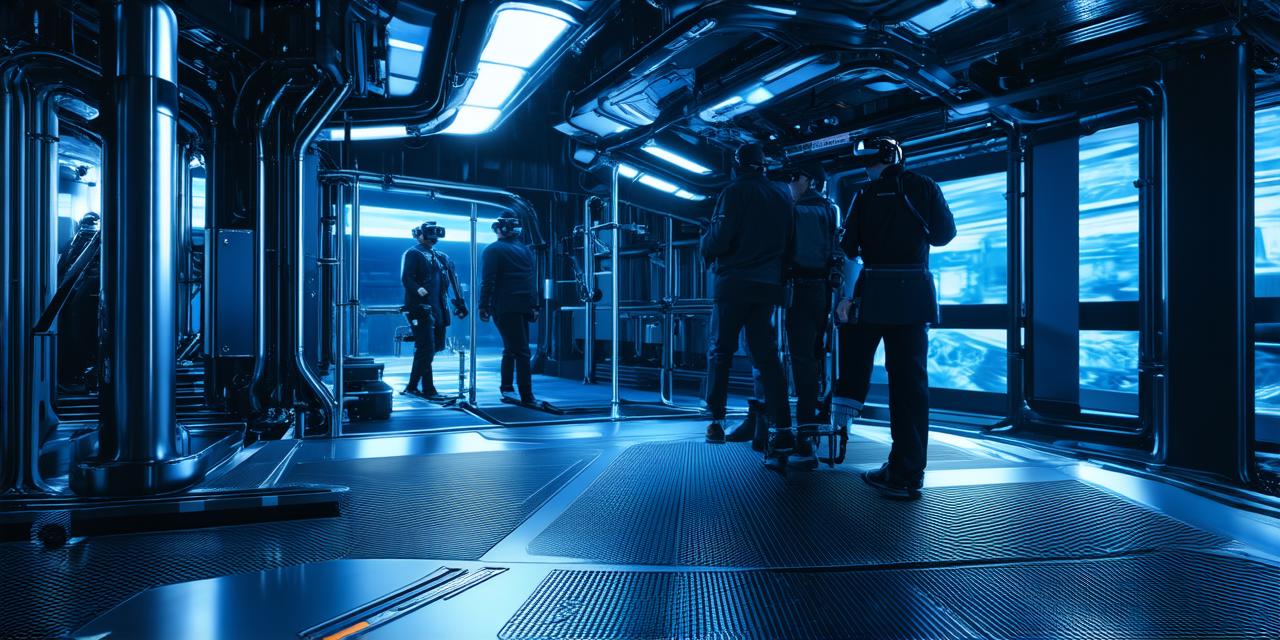<!DOCTYPE html>
Virtual Reality and Economic Development: An Overview
Virtual reality technology allows users to experience a simulated environment that is interactive and immersive. It has been used in various industries such as gaming, education, healthcare, and real estate. In recent years, VR has also gained traction in the field of economic development.
Economic development refers to the process of improving the standard of living of people in a particular region or country. It involves various factors such as job creation, infrastructure development, and technological advancement. Virtual reality technology can play a crucial role in achieving these goals by creating new opportunities and enhancing existing ones.
Virtual Reality has the potential to bring several benefits to economic development, including:
1. Job Creation
Virtual reality technology can create new job opportunities in various industries such as gaming, education, healthcare, and real estate. For example, VR developers can create immersive experiences for customers, patients, or students. Similarly, architects can use VR to design and plan buildings and infrastructure projects.
2. Enhanced Customer Experience
Virtual reality technology can enhance customer experience in various industries such as gaming, education, healthcare, and real estate. For example, VR games can provide a more immersive and engaging experience for players. Similarly, virtual tours can allow patients to explore medical facilities and treatments before deciding on them. Real estate agents can use VR to showcase properties and give clients a better idea of the space.
3. Improved Education and Training
Virtual reality technology can improve education and training in various industries such as healthcare, manufacturing, and hospitality. For example, medical students can use VR simulations to practice surgeries and other procedures. Manufacturers can use VR to simulate production processes and identify bottlenecks or inefficiencies. Hotels can use VR to train staff on customer service and hospitality.
4. Cost Savings
Virtual reality technology can lead to cost savings in various industries such as healthcare, manufacturing, and construction. For example, VR simulations can reduce the need for physical trials or experiments, leading to cost savings. Similarly, VR can be used to design and plan infrastructure projects more efficiently, reducing construction costs.
Case Studies: How Virtual Reality is Impacting Economic Development
1. Microsoft’s HoloLens in the Manufacturing Industry
Microsoft’s HoloLens is a popular VR headset that has been used in various industries such as manufacturing, healthcare, and education. In the manufacturing industry, HoloLens has been used to enhance product design and assembly. For example, Ford Motors uses HoloLens to design and assemble car parts more efficiently.
2. Virtual Tours in the Real Estate Industry
Virtual tours have become increasingly popular in the real estate industry. They allow potential buyers or renters to explore properties without physically being there. For example, Redfin, a leading online real estate platform, uses virtual tours to showcase properties to its clients.
3. Virtual Medical Training in the Healthcare Industry
Virtual medical training has become increasingly popular in the healthcare industry. VR simulations can provide a safe and controlled environment for medical students to practice surgeries and other procedures. For example, the University of California San Francisco uses VR simulations to train medical students on surgical procedures.
The Role of Government in Promoting Virtual Reality on Economic Development
1. Providing Funding and Incentives
Governments can provide funding and incentives to companies that invest in VR technology. For example, the US government provides funding for research and development of VR technology through programs such as the Small Business Innovation Research (SBIR) program.
2. Developing Standards and Regulations
Governments can develop standards and regulations to ensure that VR technology is safe and effective. For example, the US Food and Drug Administration (FDA) has developed regulations for medical devices that use VR technology.
3. Encouraging Collaboration and Partnerships
Governments can encourage collaboration and partnerships between companies, universities, and research institutions to develop and promote VR technology on economic development. For example, the US Department of Energy has partnered with several universities and research institutions to develop VR technology for energy efficiency.
The Future of Virtual Reality on Economic Development
Virtual reality technology is still in its early stages of development, and its potential impact on economic development is yet to be fully realized. However, the growth of the VR industry and increasing adoption by various industries suggest that it has significant potential to drive economic growth. As the technology continues to evolve, we can expect to see more innovative applications and use cases in various sectors, leading to significant economic growth.
Conclusion

Virtual reality technology has the potential to transform various industries and sectors, including economic development. It can create new job opportunities, enhance customer experience, improve education and training, and lead to cost savings. Governments can play a crucial role in promoting virtual reality on economic development by providing funding and incentives, developing standards and regulations, and encouraging collaboration and partnerships. As the technology continues to evolve, we can expect to see more innovative applications and use cases in various sectors, leading to significant economic growth.
